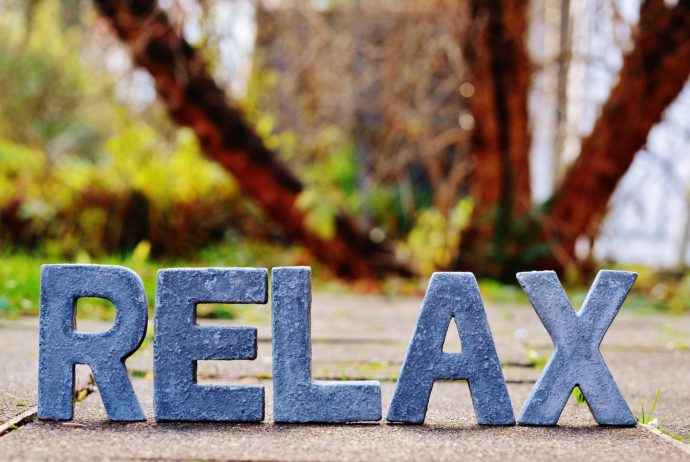Welcome to the holidays: a season full of good food, wonderful concerts, and crazy, epic stress.
Many translators and other computer-based workers are chained to our desks, muscles tight, practically vibrating with the stress of December’s usual insane deadlines. Me, I’m freaking out a little more every time I look at my email accounts… the business one or the personal one.
Maybe we’re managing our stress with exercise, as this blog has discussed before, or maybe we’re using another coping method, or maybe we’re just choosing to fling ourselves recklessly into the void. Hey, I’m in no place to judge. But I think most of us are probably experiencing some seasonal increase in stress.
Unfortunately, with stress often comes pain.
So, today I’d like to share my simplest pain control technique–something that regularly helps me both at my desk and while I’m standing on one leg in the yoga studio. It’s simple, you can do it sitting down, and all you need is 20 seconds and the tongue in your mouth.
Some of the first muscles to tense up during stress are the ones around your jaw. Many of us tense our jaw or clench our teeth when stressed, and it can have a cascading effect on our neck and shoulder muscles, too. When you stop clenching and let your jaw relax a little, it can make a big difference to the quality of your day. But since jaw clenching is generally a subconscious action, it’s pretty hard to catch yourself doing it right away.
So what I do is, I perform a specific action periodically throughout the day–every time I think of it, whether I consciously notice myself clenching my jaw or not. That action is to practice my tongue posture.
It’s something I learned years ago from the book Taking Control of TMJ (I have all the TMJ disorder). It goes like this:
- Touch the tip of your tongue to your alveolar ridge. That’s the ridge behind your upper front teeth, the same place you put your tongue when you’re making a “t” or “d” sound.
- While keeping your tongue in this position, deliberately let go and allow your lower jaw to hang down loosely, so that your top and bottom teeth are not touching.
- Take a deep breath or two.
- That’s it!
You’ll probably feel a couple of your facial muscles releasing, like the ones around your ears, or maybe even the ones over your temples. Finding the proper tongue posture like this lets you simultaneously check whether you’re tensing your jaw and start to relieve that tension. (And I bet you were tensing, weren’t you?)
Like I said, it’s the #1 simplest thing I do, and while it won’t take away all stress-related pain, hopefully it should help take some of the edge off.
Tongue posture is also tremendously useful in the yoga studio, not just for TMJ disordered people like me, but for others like my normal-jawed yoga buddy. Since a lot of standing yoga postures require serious concentration, we have this tendency to subconsciously clench our jaws with the effort, and there’s so much more ease in the pose if we consciously practice tongue posture a couple of times during it. The face, neck, and shoulder tension releases a little and lets us breathe easier. Maybe this will help you during your own exercise routine, whatever that may be.
I hope this helps a few people out there! If my instructions didn’t quite make sense, you can check out the Taking Control of TMJ ones by using Amazon’s “Look Inside” function and searching for the word “tongue.” The book contains various other exercises and tips you may find useful, but this is hands-down the one I use the most.
Happy holidays to all, and may we all make it to January 2nd as calm and healthy as possible.

